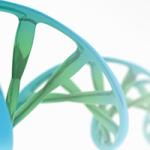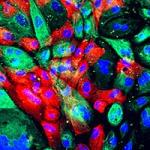
Swee Lay Thein, B.S., F.R.C.P., F.R.C.Path., D.Sc., FMedSci
Senior Investigator
Sickle Cell Genetics and Pathophysiology
NHLBI
Research Topics
The Thein group conducts research on the pathophysiology of sickle cell disease (SCD) applying insights from genotype-phenotype observations to accelerate translation of basic discovery to therapeutic applications. By combining clinical, laboratory, imaging and new diagnostic techniques, we hope to improve phenotypic definition of SCD at all levels and to introduce more targeted pharmaceutical therapies for SCD. The Thein laboratory is also involved in pre-clinical and clinical testing of drugs and innovative compounds that reduce sickle hemoglobin (HbS) polymerization, improve red cell rheology, or induce fetal hemoglobin.
SCD is an inherited hemoglobin disorder prevalent in regions where malaria was historically endemic, including sub-Saharan Africa, India, the Middle East, and the Mediterranean. Currently, an estimated 300,000 affected babies are born each year, more than 80% of whom are in Africa. In the United States, SCD is considered “rare”, but nonetheless affects an estimated 100,000 Americans (the majority being of African descent) and 1 in 365 African-American births.
The single nucleotide change underpinning SCD belies the extreme variability and severity of SCD complications, that becomes more apparent with aging, and presents major challenges in clinical management. Both acquired and inherited factors contribute to this clinical complexity of SCD. Numerous genetic association studies (candidate gene, genome-wide association (GWA), whole exome and whole genome sequencing) have attempted to identify genetic variants with particular disease complications. In a GWA study in 2007, the Thein group identified the BCL11A gene as a key repressor of gamma-globin gene, a finding that resuscitated the field in fetal hemoglobin regulation and therapeutic re-activation of gamma-globin genes for the beta-hemoglobinopathies. The finding has led to genetic strategies targeting BCL11A regulation for therapeutic reactivation in SCD and beta thalassemia under clinical development with promising results.
Prediction of disease severity and clinical course of SCD has been the topic of many reviews and, to date there is no clear algorithm using genetic and/or imaging, and/or laboratory markers that can reliably predict mortality risk in SCD. The clinical implications of delineating the genetic modifiers of SCD are significant; it will provide us the ability to predict disease severity based on a genetic SCD “panel”, and dissecting the role of new genetic modifiers might suggest new therapeutic targets for investigation. A primary approach for disease risk prediction has been polygenic risk scoring but the results remain moderately successful; they may not be so applicable in a complex disorder such as SCD that has numerous potential predictor variables. Towards the advancement of personalized medicine, the Thein group is exploring new machine learning methods incorporating predictive biomarkers (laboratory, imaging, and physiological) with genetic (germline and somatic) risk variants into risk assessment algorithms to improve risk stratification before end organ damage sets in.
While we apply insights from the basic research to identify new therapeutic targets, the Thein lab is also involved in a project with Dr Bill Eaton (Laboratory of Chemical Physics, NIDDK/NIH) to discover newer anti-sickling agents using high throughput screening of drug libraries. Not only will the compounds provide further insight on the sickling mechanisms, but those that show therapeutically significant effects at concentrations known to be non-toxic can be very rapidly approved for clinical trials as these agents are either already FDA-approved or under clinical development for other diseases. It could well be that this small molecule game changer for SCD already exists among the drugs that are being used for other disorders. Furthermore, unravelling the mechanisms of the anti-sickling effects of these agents could well reveal fresh insights on the HbS fiber formation.
Biography
Swee Lay Thein was educated in both Malaysia and the United Kingdom. She completed her specialist training in hematology at the U.K. Royal Postgraduate Medical School, Hammersmith, and the Royal Free Hospital, London. In 1982, she joined the U.K. Medical Research Council Molecular Hematology Unit in Oxford where she held various positions, including clinical training fellow, Wellcome Senior Fellow in Clinical Science, senior clinical scientist, and honorary consultant hematologist.
Dr. Thein was appointed in 2000 to the position of professor of molecular hematology and consultant hematologist at King’s College London, and served as clinical director of the Red Cell Centre in King’s College Hospital. At the hospital, she treated adult patients with sickle cell disease and also provided consultation to clinicians and researchers throughout the world on patients with unusual forms of thalassemias, inherited blood disorders that disrupt the normal production of hemoglobin, resulting in anemia.
Dr. Thein joined the NHLBI in spring 2015 as Senior Investigator and Chief of the institute’s newly formed Sickle Cell Branch.
Dr. Thein is author or co-author of more than 400 peer-reviewed research publications, invited review articles, and book chapters. She has been honored for her research with a fellowship from the U.K. Academy of Medical Sciences in the U.K. Dr. Thein also was awarded a visiting professorship from Kuwait University and an honorary professorship in pathology from the University of Hong Kong. She has served/serves on the editorial boards of the research journals Blood, Pathology, Annals of Haematology, Hemoglobin, and the American Journal of Hematology and was feature editor of the journal Blood’s Sickle Cell Disease hub, a micro-website that complements research published in the journal with links to articles, images and slideshows, and other multimedia.
Dr. Thein was chair of the European Hematology Association’s scientific working group for red blood cells and iron disorders from 2011–2014 and has organized annual international conferences on sickle cell disease (Sickle Cell in Focus, SCiF) since 2006. She also has been instrumental in organizing scientific and educational conferences on red blood cell disorders for the European Hematology Association and European School of Hematology.
Selected Publications
- Xu JZ, Conrey A, Frey I, Gwaabe E, Menapace LA, Tumburu L, Lundt M, Lequang T, Li Q, Glass K, Dunkelberger EB, Iyer V, Mangus H, Kung C, Dang L, Kosinski PA, Hawkins P, Jeffries N, Eaton WA, Lay Thein S. A phase 1 dose escalation study of the pyruvate kinase activator mitapivat (AG-348) in sickle cell disease. Blood. 2022;140(19):2053-2062.
- D'Alessandro A, Le K, Lundt M, Li Q, Dunkelberger EB, Cellmer T, Worth AJ, Patil S, Huston C, Grier A, Dzieciatkowska M, Stephenson D, Eaton WA, Thein SL. Functional and multi-omics signatures of mitapivat efficacy upon activation of pyruvate kinase in red blood cells from patients with sickle cell disease. Haematologica. 2024;109(8):2639-2652.
- Le K, Wang X, Chu J, Lundt M, Lee YY, Conrey A, Frey I, Giannini S, Kosinski PA, Hausman JM, Low PS, Jeffries N, Desai SA, Thein SL. Activating pyruvate kinase improves red blood cell integrity by reducing band 3 tyrosine phosphorylation. Blood Adv. 2024;8(21):5653-5662.
- Li H, Sachdev V, Tian X, Nguyen ML, Hsieh M, Fitzhugh C, Limerick E, Coles W, Asomaning N, Conrey A, Wu CO, Thein SL. A machine learning-based workflow for predicting transplant outcomes in patients with sickle cell disease. Br J Haematol. 2025;206(3):919-923.
- Parekh DS, Eaton WA, Thein SL. Recent developments in the use of pyruvate kinase activators as a new approach for treating sickle cell disease. Blood. 2024;143(10):866-871.
Related Scientific Focus Areas



Molecular Biology and Biochemistry
View additional Principal Investigators in Molecular Biology and Biochemistry


This page was last updated on Friday, August 29, 2025